Head to Head: AT&T Pure and Tilt 2
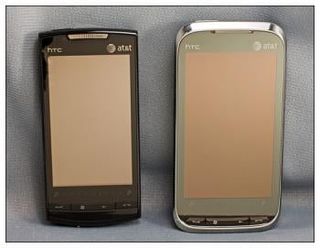
AT&T might have been slow to get to the party but, it definitely turned heads when it walked through the door. While T-Mobile, Sprint and Verizon had already released their versions of the HTC Touch Pro 2, some wondered what was causing the delay with AT&T.
To the surprise of some, AT&T first released their version of the Touch Diamond 2 (the Pure) and a week later phased in its version of the Touch Pro 2, aka the Tilt 2. While AT&T was the final major U.S. wireless carrier to introduce the Touch Pro 2, it was the first to do so with Windows Mobile 6.5 and the first to introduce the U.S. version of the Touch Diamond 2.
Both phones are impressive, quality Windows phones. But how do they compare head to head? Does the tilting screen and slide-out keyboard have an advantage over the thinner, lighter form factor? Can you live without the physical keyboard and do just fine with the on-screen keyboard? And does .4 inches really matter with screen size?
Follow the break to see how the AT&T Tilt 2 and Pure compare head to head.
The tale of the tape
Here's how these two Windows phones measure up against one another.
| Tilt 2 | Pure | |
| Dimensions | 4.54" x 2.33" x .65" | 4.33" x 2.1" x .59" |
| Weight | 6.3 Ounces | 4.15 Ounces |
| Screen | 3.6" WVGA 480 x 800 | 3.2" WVGA 480 x 800 |
| Processor | Qualcomm MSM 7201a 528MHz | Qualcomm MSM 7201a 528MHz |
| Memory | 288mb RAM, 512mb ROM | 288mb RAM, 512 ROM |
| OS | Windows Mobile 6.5 | Windows Mobile 6.5 |
What stands out when comparing the dimensions of these two Windows phones is the thickness and width.
The two are only separated by six hundredths of an inch in thickness (the Tilt 2 obviously being thicker). In comparing these two phones predecessors (the Touch Pro and Touch Diamond) the difference was a tenth of an inch. HTC has done a good job of shaving off some of the thickness with the Tilt 2.
Get the Windows Central Newsletter
All the latest news, reviews, and guides for Windows and Xbox diehards.
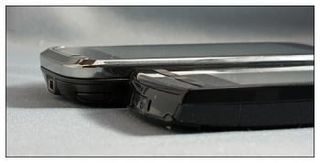
While the two have moved closer in thickness, the differences in width stands out more. The Tilt 2 is almost a quarter-inch wider on paper, and you really can feel the difference. In contrast, these phones predecessors were virtually identical in regards to width (.05 inch).
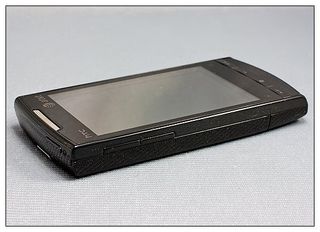
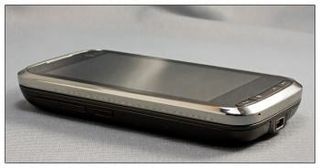
Both phones feel comfortable in the hand. But the Pure has a more compact feel to it and weighing in at 2.15 ounces heavier, the Tilt 2 is noticeably heftier.
The finishes almost are in contrast with the black, high-gloss finish of the Pure and the chrome accented black and gray finish of the Tilt 2. Both finishes attracts fingerprints but they aren't as noticeable on the gunmetal gray of the Tilt 2. I think both could use a less glossy finish that has some texture and grip to it.
Personally, I'd like to see HTC offer both these phones in a finish similar what is on the HTC Snap.

Neither the Tilt 2 or Pure are fitted with a 3.5mm jack. Instead everything funnels through the extUSB port. (Normal mini-USB cables usually work just fine.)
Under the hood, both are almost identical with the same processor, memory, software, and network capabilities. The Tilt 2 has the larger 1500mAh battery while the Pure has a 1100mAh battery.
Key Differences
Keyboard
Might as well toss out the obvious first. The Tilt 2 has a slide-out, five row, QWERTY keyboard while the Pure has no physical keyboard. Instead, the Pure relies on an on-screen, QWERTY keyboard. The Tilt 2 has the same on-screen keyboard but the added feature of a physical keyboard.
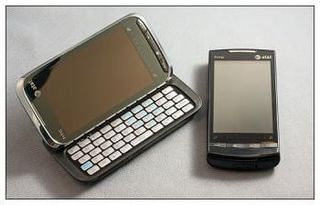
Which is better? If you do a lot of typing with emails, text messages, documents, etc. the physical keyboard can be beneficial.

While you can manage without a physical keyboard, the narrow form factor of the Pure does make typing on the screen more challenging. If you have large fingers, typing with the stylus is almost a must to be productive.
Screen
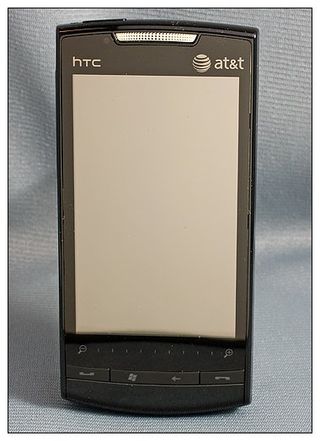

There is a four-tenths of an inch difference in the screens phones. The resolution is equal (480 x 800) with the Pure having slightly better pixel density. The Tilt 2 gives you more real estate, but the screen quality of the Pure is a touch better. Images are sharper and colors crisper. That's not to say the Tilt 2's screen is a bust. The larger screen puts more at your fingertips by simple virtue of its size.
The Pure gets the nod for quality, the Tilt 2 gets the nod for size. We'll have to call this a push in that you won't be disappointed with either.
Oh, and both touchscreens are resistive. (Flame on!)
Camera
The Tilt 2 is fitted with a 3.2-megapixel camera while the Pure has a 5.0-megapixel camera. The Tilt 2 captures decent photos and average videos. The Pure, with the boost in resolution, takes noticeably better photos but for some reason the video quality is decent at best. The first picture was taken with the Pure, the second picture taken with the Tilt 2. Asides from resizing the pictures for publication, no processing was done to either.


Software driving the camera is the same on both Windows phones with the only differences being in some of the setting's ranges. If the camera is the deciding factor between these two Windows phones, the Pure has a big advantage.
Battery
One would think that the larger battery of the Tilt 2 would give it a clear advantage over the smaller battery of the Pure. Both Windows phones benefit from the improved power management of Windows Mobile 6.5 and the difference in battery capacities isn't noticeable at all.

I have been able to easily make it through the day on a single charge with both phones. Granted battery consumption is dependent on how you use your phone. On any given day, I routinely have my email checked/downloaded every ten minutes, my calendar and contact changes are pushed with Google, have three websites pushed, and use the phone throughout a day.
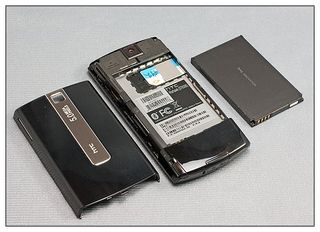
Naturally the Tilt 2 has more juice left at the end of the day but I haven't been disappointed with either Windows phone's power management and consider this difference a push.
Equality
While the Tilt 2 and Pure have their differences, some of the features and performance measures are very much equal.
Call Quality: While the Tilt 2 has the benefit of dual microphones and noise reduction software, both phones have outstanding call quality.

Speaker phone: While the Tilt 2 and Pure's speaker phone have design and functionality differences, the call quality while using the speaker is very good with both.
Software: The software installed on both are virtually identical with the only exceptions relating to feature or function differences.
GPS: Both the Pure and Tilt 2 are fitted with a GPS reciever and both perform equally. They both benefit from Quick GPS and acquire satellite signals, from a cold start, in under a minute (if not faster). Both GPS's give you an accurate location with no movement lag present.
Touch Navigation: Both the Tilt 2 and Pure are noticeable improvements over their predecessors with regards to the screen's touch responsiveness. Touch navigation is smooth and I haven't experienced any touches accidentally being interpreted as taps sending me to unwanted apps.
Overall Impressions

I honestly can not tell you, between the Tilt 2 and Pure, which is the better Windows phone. It truly is a coin toss with the preference clearly determined by individual needs.
Do you do a lot of long-winded typing? Then you might be more comfortable with the slide-out keyboard of the Tilt 2. Some may prefer their phone to be more "pocketable" and the smaller size and weight of the Pure would better suit such tastes.
The larger screen of the Tilt 2 gives you more real estate and larger targets for your fingers to tap. The smaller screen of the Pure is sharper but, for some, may require a stylus to type effectively on.
HTC has done a very good job building off the Touch Pro and Touch Diamond and all in all, both the Pure and Tilt 2 are quality Windows phones. Neither is a bad choice, the hard part may simply be choosing which one fits your needs best.
Phil is the father of two beautiful girls and is the Dad behind Modern Dad. Before that he spent seven years at the helm of Android Central. Before that he spent a decade in a newsroom of a two-time Pulitzer Prize-finalist newspaper. Before that — well, we don't talk much about those days. Subscribe to the Modern Dad newsletter!

